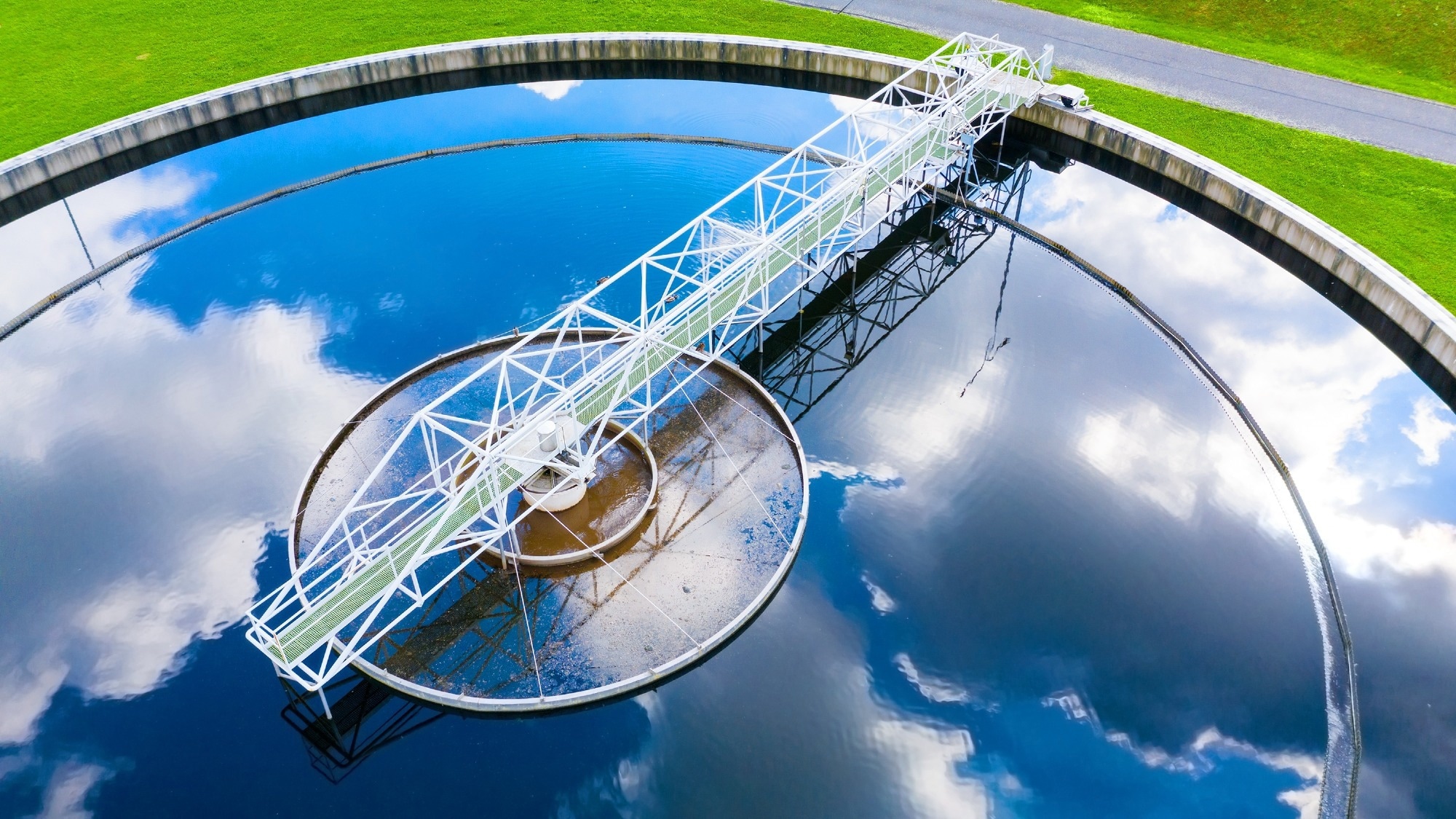The rising burden of industrial pollution, particularly from wastewater, threatens ecosystems and human health. Conventional treatment methods, such as chemical oxidation and biological filtration, often struggle to eliminate persistent contaminants like heavy metals, pharmaceuticals, and synthetic dyes, which are resistant to degradation. This inefficiency has driven the search for more effective solutions, and nanotechnology has emerged as a key contender.1

Image Credit: Kletr/Shutterstock.com
The Role of Nanocatalysts in Environmental Remediation
Nanocatalysts are materials with dimensions between 1 and 100 nanometers. They offer unique properties that enhance chemical reactions, particularly in environmental remediation.
Their nanoscale size increases surface area and reactivity, enabling them to accelerate pollutant degradation through advanced oxidation and photocatalysis. This allows for faster, more efficient treatment of complex organic and inorganic substances.
In addition to improving reaction efficiency, nanocatalysts' electronic and optical properties allow them to target specific pollutants with greater precision while reducing unwanted byproducts.2 Their integration into existing treatment systems can reduce chemical usage and energy consumption, promoting sustainability.
Moreover, their ability to desorb transformed substances from their surfaces enhances reuse, boosting overall efficiency in remediation processes.
While nanocatalysts represent a significant advancement in sustainable technologies for pollutant removal, their environmental and health impacts require careful evaluation.3
Further research is also needed to address cost and scalability challenges for broader practical application.4
Nanocatalysts: Applications in Wastewater Treatment
Nanocatalysts have shown particular promise in wastewater treatment, improving the degradation of a wide range of contaminants, including organic pollutants and heavy metals.
For instance, titanium dioxide (TiO₂) nanocatalysts are widely employed in photocatalytic processes to decompose persistent organic compounds like industrial dyes and microbial pathogens under UV light exposure. These nanomaterials generate reactive hydroxyl radicals, which enhance the breakdown of pollutants into less harmful byproducts.5
In addition, the green synthesis of nanocatalysts—using biological entities such as bacteria, algae, and fungi—offers a more sustainable production approach and produces nanocatalysts with enhanced stability.
Silver nanoparticles (AgNPs), synthesized using plant extracts, have demonstrated antibacterial properties, making them effective in treating wastewater contaminated with pathogens. Zero-valent iron (ZVI) nanoparticles are also utilized for the remediation of contaminated groundwater, where they effectively reduce heavy metals like arsenic and lead through reductive processes.
The emergence of hybrid nanocatalysts, such as those combining palladium (Pd) and TiO₂, have demonstrated synergistic effects that improve the photocatalytic degradation of organic pollutants under visible light.
Bioinspired nanocatalysts, like gold nanoparticles stabilized by plant extracts, are also gaining attention for their effectiveness in degrading dyes and other pollutants while supporting environmentally sustainable practices.
Recent advancements also include the use of metal-organic frameworks (MOFs), which have achieved over 90 % efficiency in degrading organic pollutants through advanced oxidation processes.
Nanostructured membranes infused with carbon nanotubes (CNTs) further advance filtration technologies. These membranes allow for both adsorption and catalytic degradation of contaminants, reducing treatment times and limiting sludge production.
Graphene-based nanosorbents, recognized for their high adsorption capacity and antibacterial properties, effectively remove dyes and heavy metals. Additionally, magnetic nanoparticles like nano zero-valent iron (nZVI) are being explored for their selective remediation of various contaminants.
These examples illustrate the practical applications of nanocatalysts in advancing more sustainable methods for pollution control, particularly in wastewater treatment.4,7
As regulatory demands for clean water rise and the global need for effective water treatment grows, these innovations are expected to provide eco-friendly solutions to the growing challenges of global water quality.
Discover More: Optimizing Anaerobic Wastewater Treatment with Advanced TOC Monitoring
References and Further Reading
- Vaiano, V., et al. (2020). The use of nanocatalysts (and nanoparticles) for water and wastewater treatment by means of advanced oxidation processes. Micro and Nano Technologies. doi.org/10.1016/B978-0-12-819941-1.00009-2, https://www.sciencedirect.com/science/article/abs/pii/B9780128199411000092
- Mbarek, WB., et al. (2022) Nanomaterials as a Sustainable Choice for Treating Wastewater: A Review. Materials. doi.org/10.3390/ma15238576, https://www.mdpi.com/1996-1944/15/23/8576
- Nezhad, S., et al. (2024) Laser-Assisted Preparation of TiO2/Carbon/Ag Nanocomposite for Degradation of Organic Pollutants. Materials. doi.org/10.3390/ma17164118, https://www.mdpi.com/1996-1944/17/16/4118
- Ningthoujam, R., et al. (2022) Nanocatalyst in remediating environmental pollutants. Chemical physics impact. doi.org/10.1016/j.chphi.2022.100064, https://www.sciencedirect.com/science/article/pii/S2667022422000032?via%3Dihub
- Anucha, CB., et al. (2022) Titanium dioxide (TiO₂)-based photocatalyst materials activity enhancement for contaminants of emerging concern (CECs) degradation: In the light of modification strategies. Chemical Engineering Journal Advances. doi.org/10.1016/j.ceja.2022.100262, https://www.sciencedirect.com/science/article/pii/S2666821122000230
- Obaiah, GO., et al. (2023) Comparative study of TiO2 and palladium doped TiO2 nano catalysts for water purification under solar and ultraviolet irradiation. Chemistry of Inorganic Materials. doi.org/10.1016/j.cinorg.2023.100002, https://www.sciencedirect.com/science/article/pii/S2949746923000022
- Nyabadza, A., et al. (2024) Advanced nanomaterials and dendrimers in water treatment and the recycling of nanomaterials: A review. Journal of Environmental Chemical Engineering. doi.org/10.1016/j.jece.2024.112643, https://www.sciencedirect.com/science/article/pii/S2213343724007735
- Budiarso, IJ., et al. (2024) Carbon nitride- and graphene-based materials for the photocatalytic degradation of emerging water pollutants. Materials Advances. doi.org/10.1039/D3MA01078C, https://pubs.rsc.org/en/content/articlehtml/2024/ma/d3ma01078c
- Batool, R., (2024) Redefining sustainability: Next-gen wastewater treatment breakthroughs. Clean Water. doi.org/10.1016/j.clwat.2024.100018, https://www.sciencedirect.com/science/article/pii/S2950263224000164?via%3Dihub
Disclaimer: The views expressed here are those of the author expressed in their private capacity and do not necessarily represent the views of AZoM.com Limited T/A AZoNetwork the owner and operator of this website. This disclaimer forms part of the Terms and conditions of use of this website.